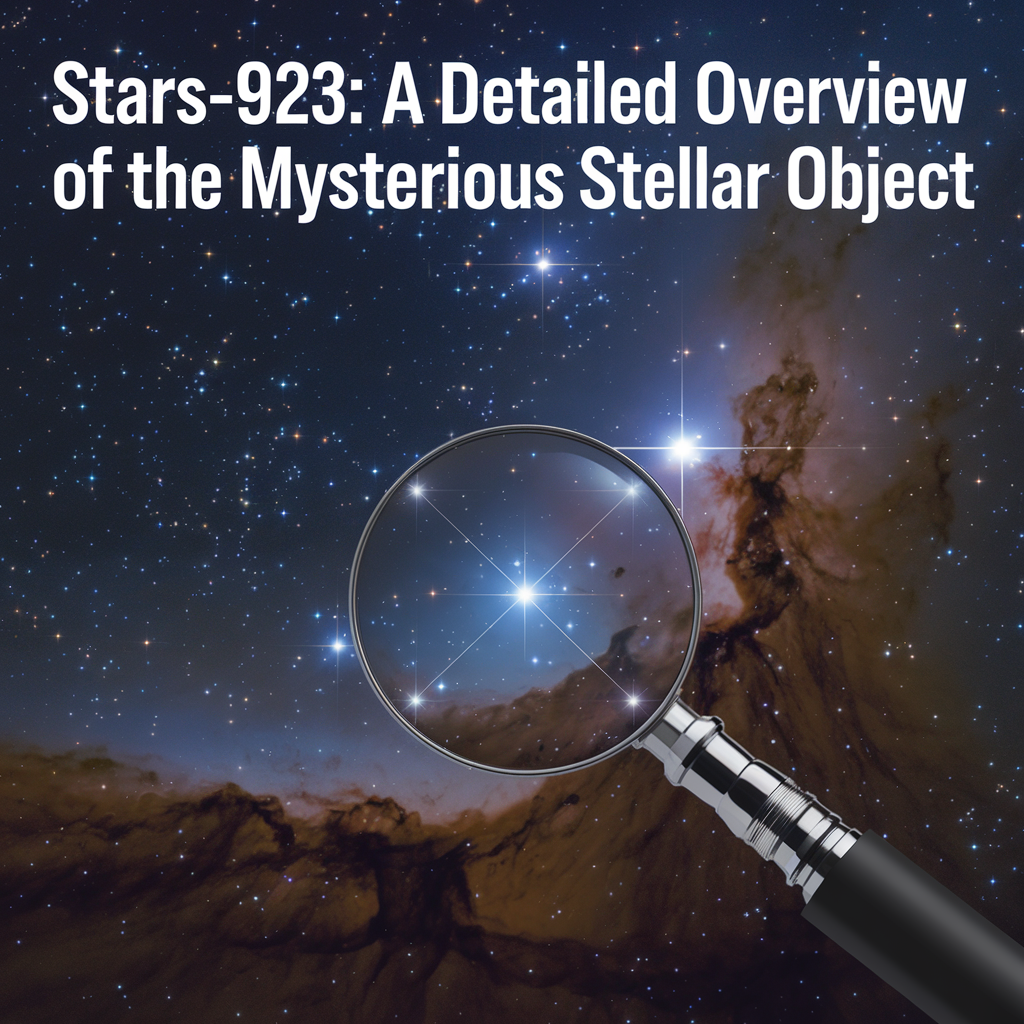Introduction
In the vastness of the universe, certain celestial bodies capture the imagination of astronomers and space enthusiasts alike. One such object that has recently garnered attention is Stars-923. This mysterious stellar object, discovered through advanced astronomical techniques, has become a subject of intrigue due to its unique properties and the challenges it presents to our current understanding of stellar evolution and cosmology.
Discovery and Initial Observations
Stars-923 was first identified in late 2023 by a team of astronomers using the latest generation of space-based telescopes. The object was detected in a region of space that had previously been mapped but not studied in detail. Its discovery was somewhat serendipitous, as it appeared in a part of the sky that had not been expected to host such an object. Initial observations suggested that Stars-923 was unlike any other star previously cataloged.
Physical Characteristics
One of the most striking features of Stars-923 is its unusual spectral signature. While most stars exhibit a clear and predictable pattern of light absorption and emission, Stars-923 displays a highly complex and variable spectrum. This variability suggests that the star might be surrounded by an extensive and dynamic circumstellar environment, possibly including a dense disk of gas and dust.
Another interesting aspect of Stars-923 is its mass and size. Estimates suggest that Stars-923 could be a supermassive star, with a mass several times that of the Sun, yet it remains relatively cool in temperature. This combination of high mass and low temperature is rare, leading some scientists to speculate that Stars-923 could be in a very early or late stage of stellar evolution.
Possible Explanations and Theories
The peculiarities of Stars-923 have led to several competing theories about its nature. Some astronomers propose that it could be a protostar, a very young star still in the process of accumulating mass from its surrounding nebula. If true, this could provide a unique opportunity to study the early stages of star formation in unprecedented detail.
Others suggest that Stars-923 might be a dying star in the final stages of its life. The unusual spectral properties could be the result of complex processes occurring in the star’s outer layers as it sheds mass and prepares to explode as a supernova. However, this theory is complicated by the fact that Stars-923 does not currently exhibit many of the other signs typically associated with stars on the brink of supernova.
Significance in Astronomy
The discovery of Stars-923 is significant not only because of its unique properties but also because it challenges existing models of stellar evolution. If Stars-923 is indeed a protostar, it could provide new insights into how stars form and evolve. Conversely, if it is a dying star, it could offer a rare glimpse into the final stages of a star’s life.
Furthermore, the study of Stars-923 could have broader implications for our understanding of the cosmos. For example, if it is surrounded by a dense disk of material, this could suggest the presence of a planetary system in formation. Alternatively, the object could be part of a binary or even a multiple star system, in which case it could help astronomers refine models of stellar dynamics and interactions.
Challenges and Future Research
Despite the excitement surrounding Stars-923, studying it presents several challenges. The object is located at a considerable distance from Earth, making detailed observations difficult. Additionally, its unusual properties require the use of specialized instruments and techniques, many of which are still in development.
Future research on Stars-923 will likely involve a combination of observational and theoretical approaches. Astronomers will continue to monitor the star using a variety of wavelengths, from radio to infrared to X-ray, in order to build a more complete picture of its nature. At the same time, astrophysicists will work to refine their models of stellar evolution to account for the unique characteristics of Stars-923.
Conclusion
Stars-923 is a fascinating and enigmatic object that has captured the attention of the astronomical community. Whether it is a protostar, a dying star, or something else entirely, its study promises to yield new insights into the workings of our universe. As technology advances and our understanding of the cosmos deepens, Stars-923 may one day become a key piece in the puzzle of stellar evolution, helping to answer some of the most fundamental questions about the nature of stars and the forces that shape them.

